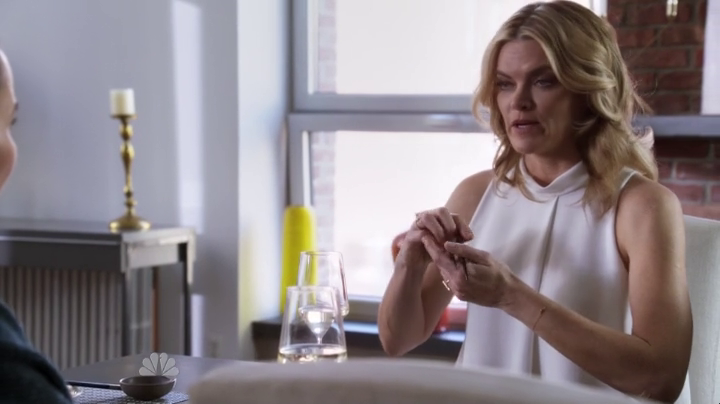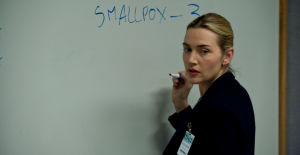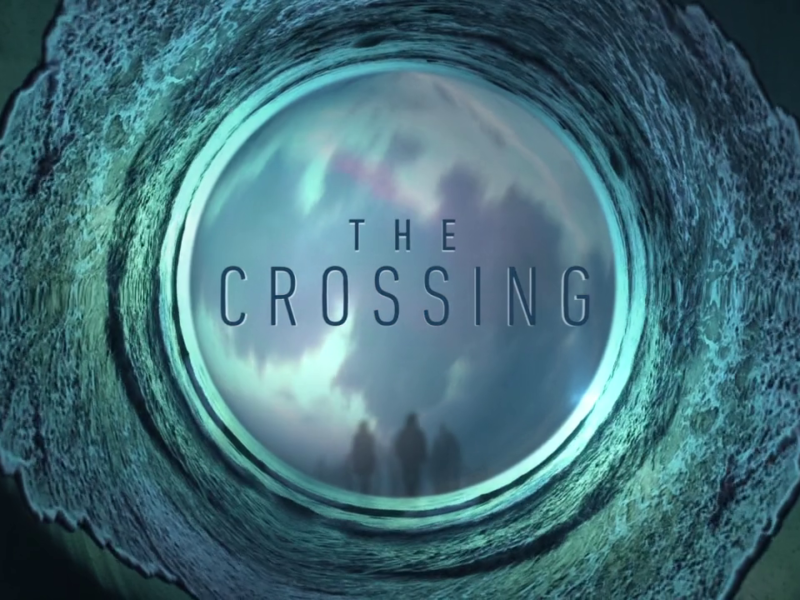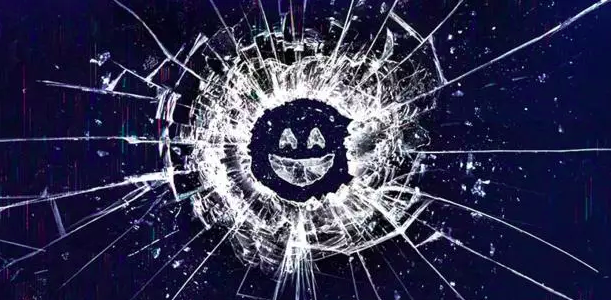Law & Order: SVU faced an unexpected challenge in the episode, Granting Immunity, as they go about their business of solving their usual sex crime cases: the anti-vaccine movement. The episode begins as expected with the detectives investigating the case of pictures taken at a middle school "Rainbow Party" that suddenly goes viral. The detectives’ investigation is soon hampered when every student involved comes down with a case of the measles.
While teenage sex parties are the stuff of urban legend, the rise of parents refusing to vaccinate their children against preventable childhood diseases is not. The 2015 measles outbreak in Disneyland has been attributed to low vaccination rates, which has allowed the disease to spread to over 17 states and Mexico. Though the show tries to portray a balanced view—the anti-vaxer movement are simply concerned for their parents—it is surprisingly very thin on science. So what exactly does science have to say and why all the fuss about getting children vaccinated? More importantly, did the writers get the science right and portray the debate fairly. To answer that question, we have to look into something known as the R0 (R-naught) and how it relates to herd immunity.
What is R0?
During a scene in the 2011 thriller, Contagion, Dr. Erin Mears (Kate Winslet) explains that R0 or the basic reproduction number is a disease's ability to spread and reproduce. This number tells us the average number of people an infected person will pass a disease to during a person's infection period—the time when an infected person can transmit a disease. This helps us determine whether a disease can spread through a population and become epidemic or whether it will die out. R0 values above one will spread and possibly become epidemic while a number lower than one will die out.
Generally, the larger the R0, the harder it will be to control an epidemic. Take both Ebola and Measles for example. Despite its nasty reputation, Ebola’s R0 is not that high and sits somewhere between 1.5 and 2.0. Measles on the other hand sits between 11 and 18 and is one of the most contagious viruses known to man. The R0 is not an indication of how dangerous a disease is but how quickly it can spread and reproduce. This means health organizations will have much more work to do to contain and prevent epidemics. The fictional Meningoencephalitis Virus One (MEV-1) seen in the movie Contagion started with a R0 of 2 and eventually jumped to a 4. Despite MEV-1’s low R0, the virus still resulted in a pandemic in the movie.
| Infectious Disease | R0 |
| Measles | 11-18 |
| Mumps | 7-14 |
| Rubella | 6-14 |
| Pertussis | 10-18 |
| Diptheria | 4-5 |
| Varicella | 7-11 |
| Poliomyelitis | 5-7 |
California is currently experiencing a large outbreak of measles. The outbreak started in December 2014 when approximately fourty people contracted the disease while visiting Disneyland. This infection has now spread to at least a half dozen states. Unfortunately, this could have been prevented. California has an overall vaccination rate of 90.7%, just below the threshold needed for herd immunity. Epidemiologists recommend that to prevent a measles outbreak, about 95% of the population needs to be vaccinated for herd immunity to take effect. Where exactly does that number come from?
The Science of Herd Immunity
Protecting Individuals
Diseases pass from person to person along a chain of infection. The idea behind "herd immunity" is that the chain can be blocked if there are enough protected individuals. If those protected individuals are higher than a certain threshold ten the number of secondary infected cases is lower than one and an epidemic is impossible. This is the objective behind vaccination programs. Once there is sufficient vaccination coverage to establish herd immunity then outbreaks can be prevented.

 . Above shows the transmission after three generations. Below is the expected transmission if
. Above shows the transmission after three generations. Below is the expected transmission if  of the population is immune. In this case, all but one person in the first generation is immune which leads to only one successful transmission of the infection. Image© Oxford University Press
of the population is immune. In this case, all but one person in the first generation is immune which leads to only one successful transmission of the infection. Image© Oxford University PressThis critical number of individuals needed for herd immunity (Ic)is related to the basic reproductive number. This makes the R0 number important to epidemiology as vaccination programs can be developed to bring the reproductive number below 1 and prevent disease spread. We can determine the proportion of protected individuals to do so with the formula:

We see from the figure above, we have a disease with an R0 of four; an infected individual will pass the disease to four people. In turn, each of these four people will pass their infection to four more people and a total of sixteen people now have the disease. This one individual, the patient zero, has passed his disease to a total of 20 people.
We see an entirely different picture if three-quarter of the population is immunized. Instead of infecting twenty people, the disease passes on to two individuals. This is the science behind herd immunity; creating an immunized population limits the spread of disease.
| Infectious Disease | Herd Immunity Threshold, Ic (%) |
| Measles | 91—94 |
| Mumps | 86—93 |
| Rubella | 83—93 |
| Pertussis | 90—94 |
| Diphtheria | 75—80 |
| Varicella | 86—91 |
| Poliomyelitis | 80—86 |
Vaccine Coverage
The herd immunity threshold tells us the proportion of immune individuals we need to prevent the spread of disease. We can reach this number through vaccination programs. Unfortunately, vaccines are not 100% effective and as a result, the critical vaccine coverage (Vc) establishing herd immunity must be higher than the number for immune individuals (Ic). We can determine this if we know the vaccine effectiveness E from the formula:

We can use this formula and the data we about out vaccine immunity threshold, Ic, to calculate the proportion of the population we need for herd immunity to take effect.
| Infectious Disease | Critical Vaccine Coverage (%) |
| Measles | 96—99 |
| Mumps | 90—98 |
| Rubella | 87—99 |
| Pertussis | 95—99 |
| Diphtheria | 79—84 |
| Varicella | 90—96 |
| Poliomyelitis | 84—90 |
The MMR vaccine is 93% effective after one dose but after two doses it raises to 97%. This reduces the critical vaccine coverage between 93—97% after two doses (The table above is after one dose only). In 2000, when the CDC declared the US measles free, 95.4% of children entering kindergarten had received their MMR shots; this is above the threshold required for herd immunity. Today, this number now stands at 92.6% which is just below the border for effective herd immunity which raises the chances for an epidemic.
Parental Choice and the Vaccine "Debate"
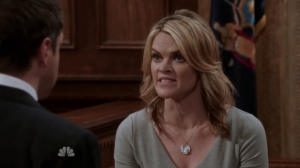
Unfortunately, none of the above science is prevented during the course of the TV show. Instead, the show tries to present both sides of the "debate" by putting Trudy Malko (Missi Pyle) on trial. Malko is charged with reckless endangerment and for falsifying documents that allowed children in the community to go unvaccinated.
While Law & Order: SUV is not a science show or even science-based TV show, presenting both sides of the debate as valid creates false balance. This is especially problematic when one side is not supported by any sort of evidence at all.
To be fair, parents who choose to not vaccinate are not terrible parents. They are simply looking out and hoping for the best for their children. They are simply asking for the choice in what happens to their children and a say in how they are protected. Should parents have the absolute and final say in what treatments their children undergo and should the law step in if a parent refuses a medical treatment?
A parent should be able to decide what treatments a child receives but that choice is not unequivocally absolute. No parent can make the absolute final decision to deny medical treatment for personal or religious reasons if doing so will hurt their children. In such cases, the law will intervene if the welfare of a child is in question. In the US, while the Constitution guarantees freedom of religion, it does not permit children to be harmed through religious practices, nor does it allow religion to be a valid legal defense when a parent harms or neglects a child. How far a personal belief exemption goes depends on the state a parent lives in.
It can be argued there is no immediate impact on a child's health whether or not a parent chooses to vaccinate or not. While that may be true, vaccines are different. For this we turn to Garrett Hardin's tragedy of the commons where individuals acting independently and rationally according to each's self-interest behave contrary to the best interests of the whole group by depleting some common resource.
In this case the “common resource” is immunity and the health of the community. The more individuals who are vaccinated the better a community's ability to deal with preventable illnesses and the less likely disease will spread. This makes vaccination a community effort; benefits come from maintaining high numbers of immune individuals. Any parent who chooses not to vaccinate compromises that. Assuming that critical vaccine coverage remains high, parents who do not vaccinate reap the benefits of herd immunity with no contribution. To make matters worse, choosing not to vaccinate diminishes critical vaccine coverage and puts everyone at risk. We certainly would not allow a parent to put their own children's lives and health at risk let alone other children around them.
Vaccines and Autism
One of the biggest arguments for not vaccinating children is the belief that vaccines cause autism. This belief stems from the 1998 Lancet paper by Andrew Wakefield which has since been retracted by the journal for impropriety. It was found that Wakefield not only falsified data but received money from special interest groups interested in suing pharmaceutical companies. It is somewhat ironic that anti-vaccination parents accuse doctors of conflict of interest but ignore that Wakefield is guilty of the same crime.
To date, there have been numerous studies on vaccines and autism conducted in Denmark, Finland, Britain, and the United States have all found no association between vaccines and autism. Wanting to find the cause of autism is understandable and justifiable especially if you are a parent of a child with the disease. Refusal to accept research findings is not.
Autism is a complex disease and current research indicates that it may support a polygenic, epistatic model; the disorder is caused by two or more genes and that those genes are interacting in a complex manner. Though parents may be well-intentioned, continual focus and demands that more research be done on the effects of vaccines on autism may actually be detrimental to their children. Instead of looking into new areas in the hope of understanding this disease better, we continually focus on areas that we know not to be the cause in the hope of pacifying distraught parents that something is being done.
Weighing Risks and Benefits
During the trial, Dr. Rudnick (Jefferson Mays) is asked about the serious side effects of the MMR vaccine. The CDC lists some of the serious side effects of the MMR as deafness, long-term seizures, coma, or lowered consciousness, and permanent brain damage. Rudnick says those side-effects are rare or as he puts it, "statistically insignificant." Malko's lawyer, Counselor Varma (Hari Dhillon) responds, "tell that to a parent who has actually experienced it."
Rudnick's response does seem heartless. It is easy to see why many parents believe they are being asked to bear an inordinate amount of risk even if it is to protect their and another's children. Who wants their children hurt even if the risk is "insignificant?"
No medical intervention is without risk and vaccines do cause side effects that range from mild to serious. As Dr. Rudnick pointed out, the risk of severe side effects are rare-about one in a million according to the CDC website. Some parents may not take comfort in this small number and decide it is better to be safe than sorry.
The problem with that response is how risk is evaluated. As much as we would like medical treatments to be 100%, this is just not possible; having an either it is completely safe or not at all mentality is impractical. We evaluate risk by comparing options and choices. In this case it is a choice between either to vaccinate or not. Both carry the risk a child will be harmed.
When we look at the numbers we see the benefits far outweigh the risks. The probability a child will be permanently harmed or killed from "naturally occurring" measles is one in one thousand – something anti-vaxxers choose to ignore – and this number is far from being statistically insignificant. An unvaccinated child is far more likely to suffer from severe complications by contracting measles than a vaccinated child.
Finding Balance
The problem of the "Granting Immunity" episode is that it presents both sides of the debate as potentially valid. In an Entertainment Weekly article, showrunner Warren Leight says, "Even if I have my own personal opinions, and people here have their own personal opinions, we don’t make it a straw dog. We present both sides of the debate as articulately as we can." An early draft of the episode's script had district attorney Rafael Barba (Raúl Esparza) shutting down Pyle’s character on the stand. A later rewrite had Pyle firing back and diffusing the prosecution's apparent win.
Though the show exists strictly for entertainment value, does looking at both sides equally make it seem more credible as a source of information? While the show did find Malko guilty of second degree reckless endangerment, it did nothing to say that any of the fears or concerns she had as a mother were scientifically unwarranted. Anyone watching the show could conclude that the science is unsettled and we need to debate and discuss the issue to find common ground, something that is apparent in Leight's EW interview. The problem is that there is no debate or, at least, there should not be. The science behind establishing herd immunity is already established and settled. Acquiring immunity through vaccination is safer and saves more lives than "naturally acquired" immunity.
We do not know the reasons why the show's writers chose to write the story they did. Maybe they knew they had viewers from both sides and did not want to risk offending anyone or causing controversy. Law & Order: SUV is a courtroom drama where guilt is never assumed and both sides have their day in court. That alone may make this the wrong venue for a vaccine discussion which is unfortunate as provides a missed opportunity to educate people about the importance of vaccines and how the science of herd immunity applies to them. Though Leight admits to being intrigued by the low vaccination rates in Napa Valley and the reasons behind, maybe it would have been best if the show left it alone.
Show Science Rating: C-
Further Reading
Fine, P. E. Herd immunity: history, theory, practice. Epidemiol Rev, Communicable Disease Epidemiology Unit, London School of Hygiene and Tropical Medicine, England., 1993, 15, 265-302
Fine, P.; Eames, K. & Heymann, D. L. “Herd Immunity”: A Rough Guide Clinical Infectious Diseases, Oxford University Press (OUP), 2011, 52, 911–916
Jones, J. H. (2007) Notes On R0.
Plans-Rubió, P. Evaluation of the establishment of herd immunity in the population by means of serological surveys and vaccination coverage. Human Vaccines & Immunotherapeutics, Informa UK Limited, 2012, 8, 184–188
Check some of our other articles
- Is the science presented in Contagion relevant and accurate?
- Can the 'Orphan Black' Project Castor prions be an STD?
Also published on Medium.

